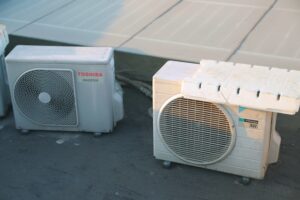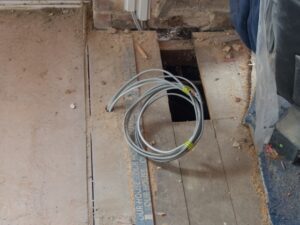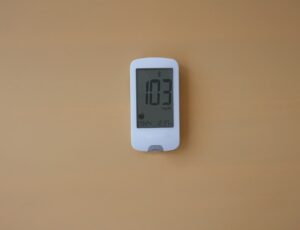As a homeowner or business owner, you depend on your heating system to keep things comfortable during the colder months.
But have you ever thought about the unsung hero behind all that warmth?
We’re talking about the gas valve on your water heater or furnace. This small but mighty component controls the flow of gas to the burner, which is essential for creating the heat that keeps your home or business cozy.
At Excel Mechanical, we understand the importance of having a properly functioning gas valve in your heating system. This valve isn’t just there to help generate heat — it also plays a significant role in the efficiency of your system and your overall safety.
A malfunctioning gas valve can lead to gas leaks or other dangerous hazards, which is why it’s crucial to have a professional inspect and maintain it regularly.
When was the last time you had your gas valve checked?
Sometimes, it’s easy to forget about the little things, but the safety of your home or business depends on ensuring everything is working properly.
We work with you to find the best possible system to meet your needs and budget, and we stand behind our work, guaranteeing your satisfaction.
So, when it comes to your heating system, trust the professionals at Excel Mechanical to ensure everything runs smoothly and safely!
In this section, you will learn:
- The vital role of a gas valve in heating systems.
- Why a well-maintained gas valve is essential for both efficiency and safety.
- How Excel Mechanical can help you keep your heating system in top shape.
Let’s get started!
Understanding Gas Valves
Gas valves are an essential component of your heating system.
They do more than just regulate the flow of gas to the burner — they play a critical role in ensuring that your system operates safely, efficiently, and without hiccups.
So, what exactly does a gas valve do, and why is it so important to understand how it works?
Let’s break it down.
Types of Gas Valves
There are several types of gas valves used in heating systems. The most common types are:
- Control valve: regulates the flow of gas to the burner based on the temperature setting.
- Gas control valve: opens and closes in response to signals from the thermostat.
- Regulator: reduces the pressure of the gas from the main valve to a safe level for the system.
Gas Valve Components
Gas valves consist of several components that work together to regulate the flow of gas to the burner. These components include:
- Solenoid: an electromechanical device that opens and closes the gas valve.
- Main valve: controls the flow of gas to the system.
- Thermocouple: a safety device that shuts off the gas valve if the pilot light goes out.
- Ignition: a device that ignites the gas when the system starts up.
- Temperature probe: a device that measures the temperature of the water or air in the system.
Function of Gas Valves in Heating
The purpose of your gas valve is straightforward but vital. It regulates the flow of gas to the burner, which ignites to produce heat. Here’s how it works:
- When your thermostat senses the temperature has dropped below the set level, it sends an electrical signal to the gas valve.
- The valve then opens, letting gas flow to the burner.
- The ignition system sparks to ignite the gas, and the burner begins to heat the air or water circulating through your system.
Without the gas valve, none of this would be possible. It’s essentially the “gatekeeper” for your system’s heat production.
Common Issues and Troubleshooting
When something goes wrong with your heating system, it’s often the gas valve that’s to blame.
But how do you know if there’s an issue with your gas valve, and when should you call in the professionals?
Understanding common problems and knowing the right steps to troubleshoot can save you time, money, and stress.
Here are some key things to keep in mind.
Identifying Common Failures
Some common failures of gas valves on heaters include leaks, malfunction, and faulty valves.
Gas leaks can be dangerous and should be addressed immediately. Malfunctioning valves can cause your heater to not work properly or not work at all.
Faulty valves can also cause your heater to not work, but they can also cause other issues such as high gas bills or a lack of hot water.
Troubleshooting Steps
If you are experiencing issues with the gas valve on your heater, there are some troubleshooting steps that you can take before calling a professional.
- First, check for any gas leaks.
- If you smell gas, turn off the gas supply immediately and call a professional. If there are no gas leaks, check the thermocouple and igniter.
- If these components are faulty, they may need to be replaced.
- You can also check the safety valve to ensure that it is functioning properly.
- If you are unsure of how to troubleshoot your gas valve, it is best to call a professional.
When to Call a Professional
So, what if the issue persists even after troubleshooting?
Well, it’s time to call a professional. Here’s why:
- Gas leaks or suspected leaks are never a DIY fix. They are serious safety hazards that should only be handled by an expert.
- Inconsistent operation: If your system isn’t firing up, or you’ve tried troubleshooting without success, an HVAC professional can get to the root of the problem.
- Replacing a gas valve can be tricky and requires special knowledge. If you’re unsure how to handle a malfunctioning valve or if you’re uncomfortable working with gas appliances, it’s best to leave it to the experts.
At Excel Mechanical, our technicians are skilled at diagnosing and repairing issues with gas valves. From simple repairs to complete replacements, we’ll make sure your system is safe, efficient, and ready to keep you warm.
Remember: Gas valves play a crucial role in the overall safety and efficiency of your heating system. Don’t wait until the issue escalates. Contact us today if you’re facing any of these common issues, or if you just want to make sure your system is running at its best.
Replacement and Installation
When it comes to replacing a gas valve or installing a new one, it’s crucial to make sure you’re choosing the right components and following the proper steps.
After all, you rely on your heating system for comfort and safety, and a malfunctioning gas valve can lead to serious issues, from inconsistent heating to potential safety risks.
Let’s dive into how to handle gas valve replacements and installations the right way.
Choosing the Right Gas Valve
When it comes to replacing a faulty gas valve on your heater, it is important to choose the right one. There are different types of gas valves available, including manual valves, solenoid valves, and gas chain valves.
It is important to choose a valve that is compatible with your heater and meets your specific needs.
If you are unsure which valve to choose, it is best to consult a technician or plumber.
At Excel Mechanical, we have a team of experts who can help you choose the right gas valve for your heater. We work with top brands such as Eco, GE, Honeywell, and more to ensure that we provide the best possible system to meet your individual needs and budget.
Step-by-Step Replacement Guide
Replacing a gas valve on your heater can be a complex process, but with the right guidance, it can be done successfully.
Here is a step-by-step guide to help you replace your gas valve:
- Turn off the gas and water supply to the heater.
- Disconnect the gas line from the valve using an adjustable wrench.
- Disconnect the thermocouple and pilot tubing from the valve.
- Remove the old valve by unscrewing it from the heater.
- Install the new valve by screwing it onto the heater.
- Reconnect the thermocouple and pilot tubing to the new valve.
- Reconnect the gas line to the new valve.
- Turn on the gas and water supply to the heater.
- Test the heater for leaks and proper operation.
Installation Best Practices
When installing a new gas valve on your heater, it is important to follow best practices to ensure that the installation is done correctly.
Here are some tips to keep in mind:
- Make sure that the gas valve is compatible with your heater.
- Use the correct tools and equipment for the installation.
- Follow the manufacturer’s instructions for installation.
- Test the heater for leaks and proper operation after installation.
Safety and Risk Prevention
When dealing with gas valves on heaters, safety should always be your number one priority.
A malfunctioning gas valve can lead to serious safety risks, such as gas leaks or even fires.
That’s why it’s so important to understand the safety features of your gas valve and how to prevent these dangers.
Let’s explore how you can keep your heating system running safely and efficiently.
Understanding Safety Features
Gas valves on heaters are equipped with various safety features to prevent gas leaks and fires.
- One such feature is the thermocouple, which is a safety device that shuts off the gas supply if the pilot light goes out.
- Another feature is the safety valve, which is designed to release gas if the pressure inside the system becomes too high.
- The flame sensor is another important safety feature that detects the presence of a flame and shuts off the gas supply if the flame goes out.
Preventing Gas Leaks and Fires
Preventing gas leaks and fires is a top priority when it comes to gas valves on heaters.
One way to prevent gas leaks and fires is to perform routine maintenance and inspections on your system. This includes checking the combustion chamber for any signs of damage or corrosion, as well as inspecting the heat limiter to ensure that it is functioning properly.
It is also important to follow all safety precautions when operating your heater, such as keeping flammable materials away from the unit and ensuring that the pressure relief valve is functioning properly.
Routine Maintenance and Inspections
Regular inspections and maintenance can make a huge difference in the long-term safety and efficiency of your heating system. Just like with any appliance, wear and tear can affect the performance of your gas valve and other components, so having them checked regularly is key.
- Look for Signs of Wear and Tear: Keep an eye on the system for any signs of damage, rust, or leaks. If you notice anything unusual, don’t wait to call for repairs. Small issues can quickly escalate into larger, more expensive problems if left unaddressed.
- Professional Inspections: Routine maintenance from a professional technician ensures that all the safety features of your gas valve are working as they should. A professional inspection will check everything from the burner assembly to the gas lines and safety features. Regular inspections help keep everything running smoothly and reduce the risk of accidents.
Optimizing Heater Performance
Now that we’ve covered safety and prevention, let’s talk about making sure your gas valve and heating system are performing at their best.
After all, the more efficiently your heater runs, the more comfortable and cost-effective your home will be.
So, how can you optimize your system for better performance, gas efficiency, and an extended lifespan?
Enhancing Water Temperature Control
Maintaining the desired temperature of your hot water is essential to ensure you have enough hot water for your household needs.
To enhance your water temperature control, you need to check your thermostat settings regularly. If you find that the water temperature is too high, you can lower the thermostat settings to save energy and reduce the risk of scalding.
If your water temperature is too low, you can increase the thermostat settings to ensure that you have enough hot water.
Improving Gas Efficiency
To improve your gas efficiency, you need to ensure that your gas flow is consistent and that your burner assembly is clean and free of debris.
Regular maintenance of the gas valve on your heater is crucial to ensure that your system is running efficiently. You can also consider upgrading your water heater to a more efficient model to save energy and reduce your energy bills.
Extending Water Heater Lifespan
Who wants to replace their heating system earlier than necessary?
Not many, right?
Luckily, there are several strategies you can use to extend the lifespan of your heater—and, by extension, your gas valve.
- Routine Maintenance: This can’t be stressed enough! Routine maintenance is a great way to prolong the life of your heating system. Regularly check the gas valve, burners, and overall system for wear and tear. You can also have a professional technician perform annual tune-ups to ensure everything is in good condition.
- Avoid Overuse: Constantly running your heater at full blast can put a lot of strain on the system. Whenever possible, try to use your heater efficiently. Consider using a programmable thermostat to regulate the temperature and avoid unnecessary heating when it’s not needed. This not only helps your system last longer but also reduces your gas bills.
- Upgrade Components: If your system is getting old, consider upgrading components like the gas valve, the burner assembly, or even the thermostat. Newer parts will function more efficiently, ultimately helping to extend the life of the system.
By following these simple steps, you can help your heater—and its gas valve—work for longer without the need for frequent repairs or replacements.
At Excel Mechanical, we understand that your water heater is an essential part of your home or business. Our team of professionals strives for exceptional quality and great value, providing the best possible system to meet your individual needs and budget.
With our expertise in HVAC and plumbing services for both residential and commercial customers, we are the best option for optimizing your heater performance.




